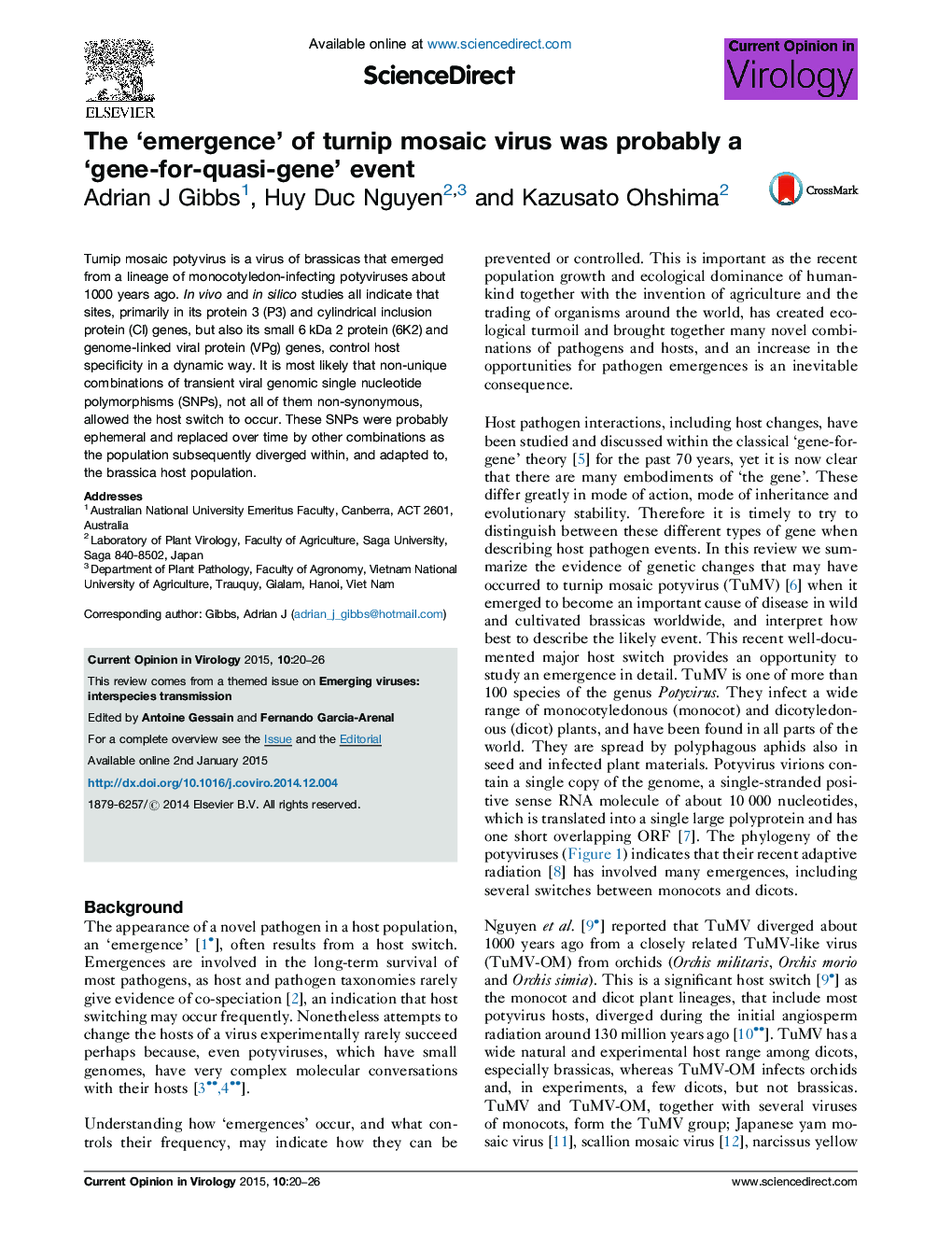| Article ID | Journal | Published Year | Pages | File Type |
|---|---|---|---|---|
| 2473226 | Current Opinion in Virology | 2015 | 7 Pages |
•Taxonomies of plant viruses and their hosts are rarely congruent.•Rates of host switching by plant viruses in nature are unknown.•Genome-wide SNPs appeared when TuMV infected a novel host.•Host specificity probably determined by ephemeral SNP combinations.
Turnip mosaic potyvirus is a virus of brassicas that emerged from a lineage of monocotyledon-infecting potyviruses about 1000 years ago. In vivo and in silico studies all indicate that sites, primarily in its protein 3 (P3) and cylindrical inclusion protein (CI) genes, but also its small 6 kDa 2 protein (6K2) and genome-linked viral protein (VPg) genes, control host specificity in a dynamic way. It is most likely that non-unique combinations of transient viral genomic single nucleotide polymorphisms (SNPs), not all of them non-synonymous, allowed the host switch to occur. These SNPs were probably ephemeral and replaced over time by other combinations as the population subsequently diverged within, and adapted to, the brassica host population.
